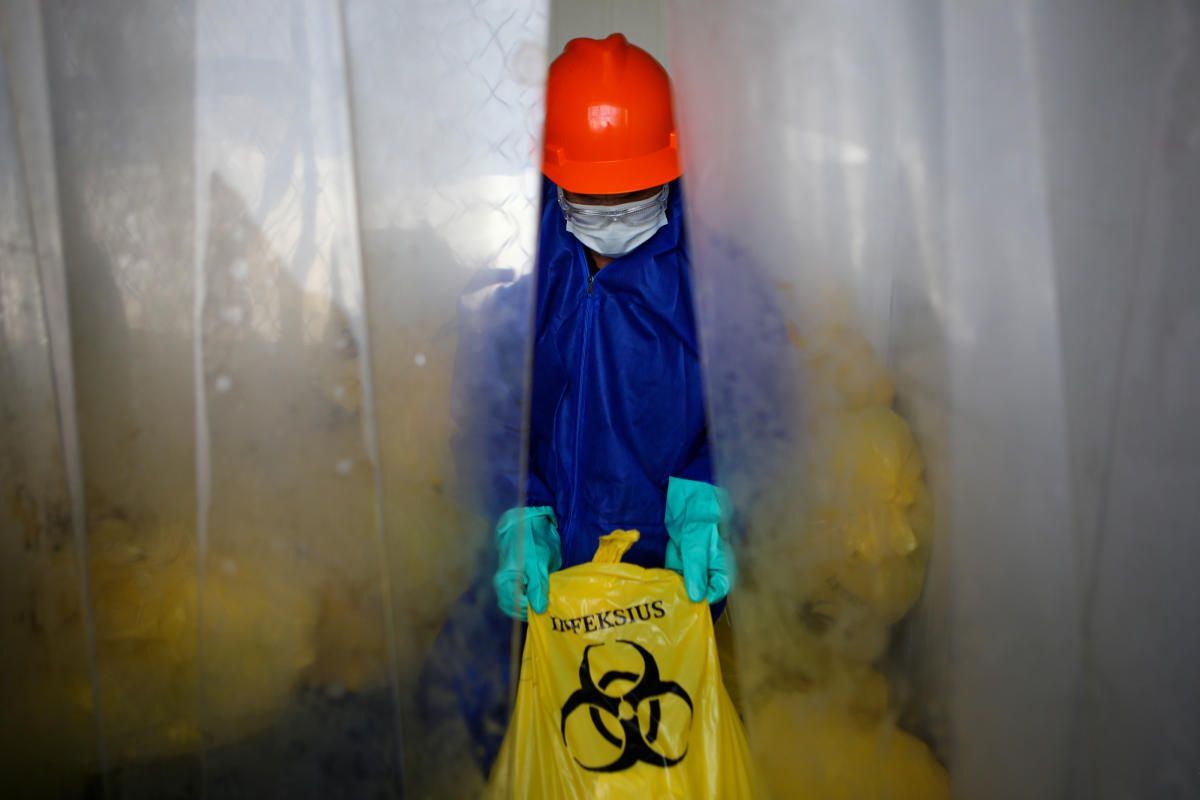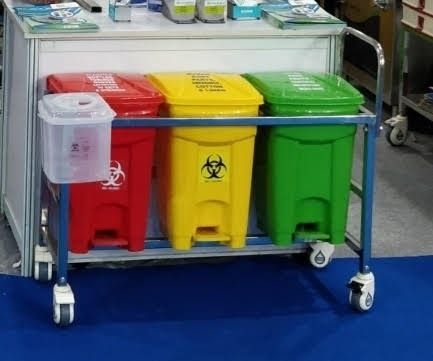Understanding of the Bio-medical Waste Management Regulations in India amidst the COVID-19

The outbreak of Covid-19 has created a great havoc across the globe. This global pandemic was first seen in the Wuhan City of China in the late December 2019, which gradually started to spread rapidly across the globe which has now caused more than 7 lakh deaths and there is no treatment, vaccine or medicine invented to effectively treat the same. The medical researchers and various medical institutes have engaged themselves to discover a permanent prevention and treatment to such a deadly virus. The outbreak of COVID-19 has touched every notion of the human existence and there is no such exception to the Environment as well. The increasing number of the usage of Personal Protection Equipment like the surgical masks, gloves and shoe covers along with other medical waste will have an adverse effect upon the Environment if there is no stringent disposal mechanism available against disposing such hazardous biomedical waste. There is an utmost urgency for us to understand and study the ambit of Biomedical Waste Management Regulations in India covering the utmost necessity of the growing environmental degradation due to the ineffective stand upon proper biomedical waste management amidst the COVID-19 Outbreak in India.
Definition of Bio-Medical Waste
According to World Health Organization,
“a health care waste or bio-medical waste is a waste which is generated by health care activities which includes a wide range of materials from used needles and syringes to soiled dressings, body parts and tissues, diagnostic samples, blood samples, chemicals, medical devices and radioactive materials.”[1]
According to the Bio-medical Waste (Management and Handling) Rules, 1998 of India, a Bio-medical Waste defines
“any waste which is generated during the diagnosis, treatment or immunization of human being or animal, or in research activity pertaining thereto or in the production or testing of biologicals, and including categories as mentioned in schedule I”.[2]
The simplified definition of Bio-medical waste can be defined as any waste which includes anatomical wastes, pathological wastes, infectious wastes which are generated out of the day-to-day medical activities in a hospital or medical research institute.
The increasing number of bio-medical waste which has been generated in the past few months in various hospitals and medical institutes in India have posed a big challenge before us regarding a proper bio-medical waste management mechanism. A Bio-medical waste management is a mechanism through which health care wastes are properly managed and disposed based upon its classification of wastes in order to protect the environment, general public, healthcare and sanitation employees who are at the height of the danger of exposure to biomedical waste as an occupational hazard.
Classification of Bio-Medical Wastes

International Agreements and Conventions
The number of International agreements and conventions particularly pertaining to Bio-medical waste management is quite less in number. There are three international agreements and conventions which are addressing the issues with regards to Bio-medical waste management (BMWM) which are necessary to lay emphasis on while discussing about the current topic and in preparation of waste management policies. These are- Stockholm Convention on Persistent Organic Pollutants, Basel Convention on Hazardous Waste and Minamata Convention on Mercury.
1. Stockholm Convention on Persistent Organic Pollutants (POPs) - The Stockholm Convention on Persistent Organic Pollutants is a international treaty which was signed on 22 May, 2001 which came into effect on 17 May, 2004. The objective of this treaty is to protect human health and the environment from POPs. These are some toxic chemicals which accumulates in the fatty tissues of living organisms and causes severe health hazard. These chemicals are produced out of medical waste incinerators and other combustion processes.
2. Basel Convention on Hazardous Waste – The Basel Convention on Hazardous Waste was signed on 22 March, 1989 and came into effect from 5 May, 1992. This international treaty become designed to restrict the movements of hazardous waste among countries and specifically to prevent transfer of hazardous waste from developed countries to less developed countries. The prime objective behind this convention was to protect the human health and the environment against the adverse effects resulting from the generation, management and disposal of hazardous waste generated specifically clinical wastes from hospitals, health centres and clinics.
3. Minamata Convention on Mercury - Minamata Convention on Mercury is a global treaty to protect human and environment from the adverse emissions releases of mercury and its compounds. This United Nations Treaty was signed on 10 October, 2013 which was the foremost new global convention on environment and health. This treaty lays emphasis on discontinuation of certain medical equipment in health-care services which includes mercury containing medical items such as thermometers, blood pressure devices, etc.
Legal Position of Bio-Medical Waste Management in India
The Rise in Bio-medical waste amid the COVID-19 in India has raised a lot of concern for environment with regards to the proper Bio-medical waste disposal management laws in India. The Bio-medical waste management rules and regulations which governs the Bio-medical waste management in India are-
1. The Bio-medical Waste (Management and Handling) Rules, 1998- For the very first time in 1998, the Bio-medical Waste (Management and Handling) rules, 1998 came into force. The Central Government in exercising of the powers conferred by section 6,8 & 25 of the Environment Protection Act, 1986 notified these for the management and handling of biomedical wastes generated out of hospitals, clinics and other clinical studies institutes. The Rules provides specific sets of definitions to various terms such as Biologicals, Bio-medical waste, Bio-medical waste treatment facility, and so on. It lays down the duty for the occupier of an institution which generates medical wastes to ensure such wastes are handled with proper disposal management to protect human health and the environment. These rules also highlight the treatment and disposal of the biomedical waste generated and defines segregation of the waste in terms of their forms. Further these Rules have five schedules –

2. Biomedical Waste Management Rules, 2016 – With the growing dynamic changes in the field of Bio-medical waste management issues in India, it was necessary for the Government of India to implement effective new rules and hence decided to publish a new set of rules, Biomedical Waste Management Rules, 2016, which supervened the previous one with varied alterations and additions in order to improve the collection, segregation, treatment and disposal mechanisms of these biomedical waste produced out of the hospitals and laboratories to mitigate the environmental pollution. The different sets of technologies identified under these new sets of rules are incineration, microwaving, autoclaving and chemical treatment. The main objective behind laying down of the new rules is to lay emphasis on the concept of 3Rs, namely, reduce, recycle and reuse. It aims to limit the waste and recover or reuse as much as we can and avoid disposing of it. These guidelines lay its focus mostly upon the application and implementation of the rules and these rules are to train the workers, immunization and safety of the workers. The ambit within the new guidelines have expand and provides for pre-treatment of blood samples, lab waste and so on. These new rules have simplified the categorization and authorization.
3. Constitutional Mandate for a Healthy and Clean Environment – Added by the 42nd Constitutional Amendment, Article 48-A was inserted to the Directive Principles of State Policy hereby directing the State to protect and improve environment and to safeguard the forests and wildlife of the country[3].In M.C Mehta v. U.O.I [4], the SC counting on Article 48-A, gave directions to the Central, State and diverse local bodies and forums to take appropriate steps for the control of pollution of water. The Apex Court through its various judicial proclamations have laid emphasis that the right to live in a clean environment is a fundamental right underneath the ambit of Article 21. In various cases such as Rural Litigation and Entitlement Kendra v. State of Uttar Pradesh[5], Vellore Citizen’s Welfare Forum v. U.O.I, , the court have given its verdict based upon the importance of a clean environment being the utmost necessity for a nation to follow. The Disposal of hazardous and toxic substance have been recognized under Article 21 of the Indian Constitution. In the case of Research Foundation for Science, Technology and Natural Resource Policy v. Union of India, a writ petition was filed before the Apex Court for directing a ban on all imports of hazardous wastes, to amend the rules in conformity with the BASEL Convention and to declare that without adequate protection to the workers and public and without any provision of sound environmental management of disposal of hazardous waste, the Hazardous Wastes (Management and Handling) Rules, 1989, was violation of Fundamental Rights under Article 21, 47 and 48-A. The Court held that the directions contained in BASEL Convention have to be followed strictly by all the concerned players before any vessel is allowed to enter Indian territorial waters. The polluter pays principle will be applied whenever such violations occur.[6]
4. Criminal Procedure Code & Environmental Protection – Many a times the hospitals and other healthcare institutions dump their medical wastes in the municipal garbage dumps. These dumps are regularly collected by the rag pickers who search for plastics, syringes so that they can be resold for re-cycling especially when they are looking out for an opportunity to sustain their livelihood. All environmental pollution can be controlled by the District and the Sub Divisional Magistrates or by Magistrates who are empowered under Section 133 to issue a conditional injunction order against a particular person[7] and under Section 143 to issue an absolute order against general public not to repeat or continue a public nuisance[8], instance being disposing of biomedical waste in municipal garbage.
Conclusion
The Central Pollution Control Board in March,2020 has launched pointers for managing and disposal of biomedical waste generated during treatment, diagnosis and quarantine of patients who are positive of COVID-19. The number of tests and samples that are been collected are rising in a mammoth rate which has adversely affected the biomedical waste management in India posing a great threat to the environment. The guidelines issued for the BMW in India are to be strictly followed along with the recent changes made to the new guidelines issued for meeting the disposal requirement for COVID-19. It becomes necessary for even prudent citizens like us to be aware of the rules and the guidelines issued by the Government for proper management of COVID-19 situation and keeping our surrounding clean and healthy for us. Also, this is a high time for the legislature to enact laws pertaining to the issue of Biomedical Waste Management to be applicable. The COVID- 19 outbreak has put India’s unsophisticated garbage treatment system especially its inadequate handling capacity for biomedical waste to a massive test. Hospitals are supposed to take all steps to ensure that biomedical waste is handled without any adverse effect to human health and the environment. They should maintain a register that’s updated daily and display on their websites the monthly record of various categories of biomedical waste generated. According to the World Health Organization’s guidance for treating corona-virus patients, PPE should be “discarded in an appropriate waste container after use.” A strict enactment of a legislation in this matter can be a great topic of discussion.

[1] Bio-Medical waste definition, World Health Organization (https://www.who.int/topics/medical_waste/en/ last visited – 05/07/2020).
[2] Rule 3(5), The Bio-Medical Waste (Management and Handling) Rules, 1998.
[3] Article 48-A, Constitution of India.
[4] M.C Mehta v. U.O.I, 1988 1 SCC 471.
[5] Rural Litigation and Entitlement Kendra v. State of Uttar Pradesh, 1985 AIR 652.
[6] Research Foundation for Science, Technology and Natural Resource Policy v. Union of India, AIR 2012 SC 2627.
[7] Section 133, CrPc, 1973.
[8] Section 143, CrPc, 1973.

Comments ()